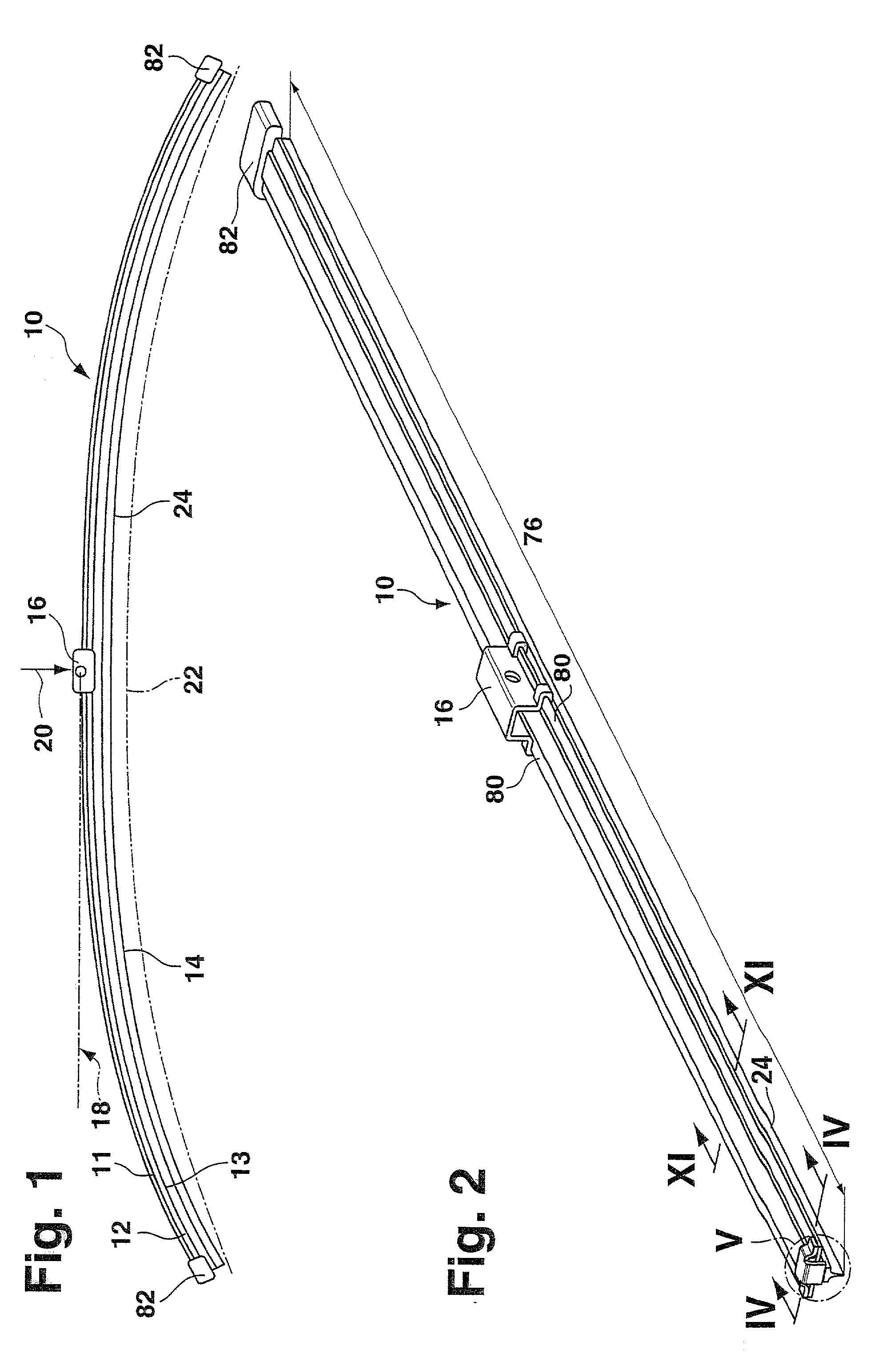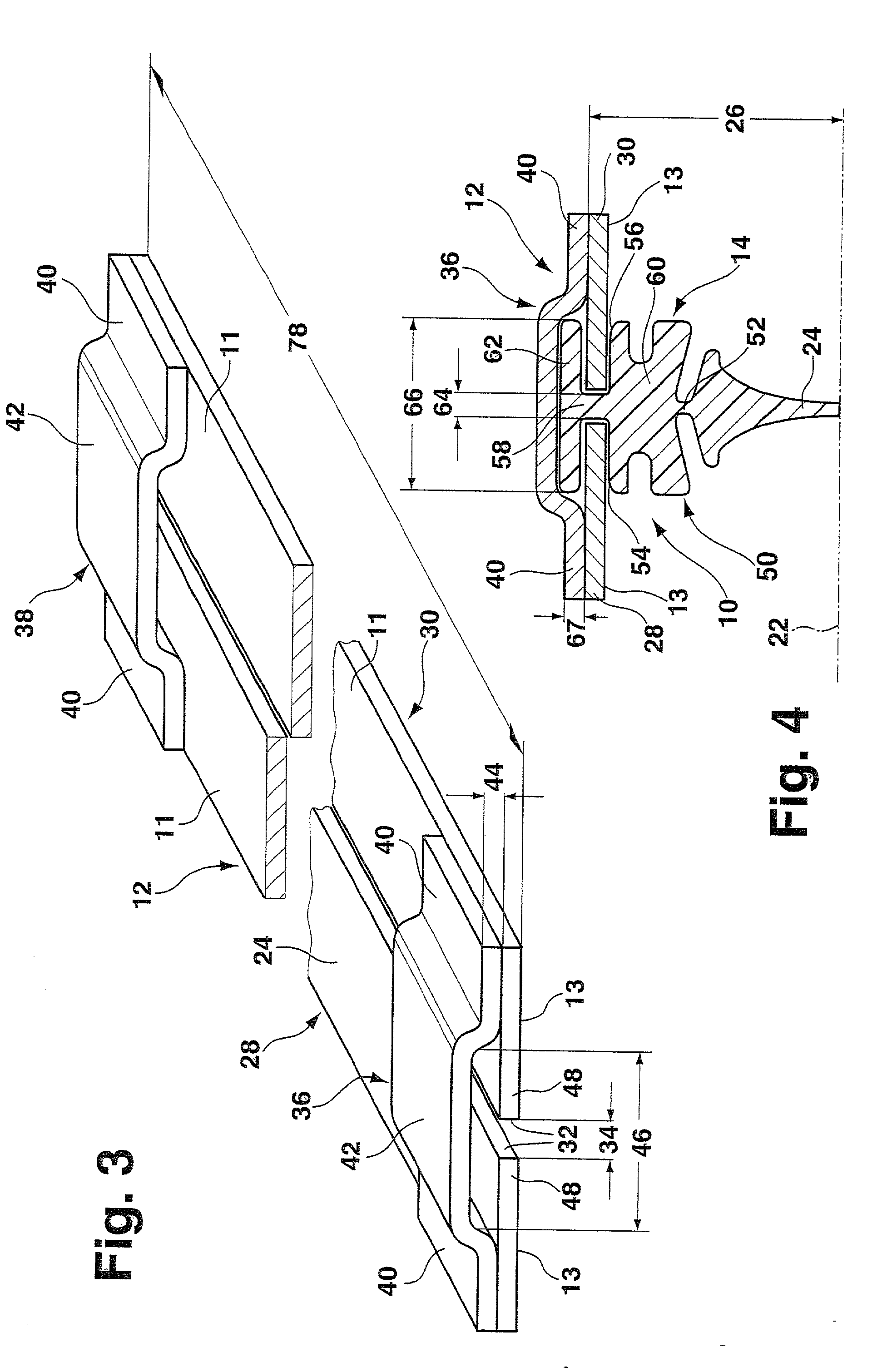Wiper blade for cleaning vehicle windowa
a technology for vehicle windows and wiper blades, which is applied in the direction of vehicle cleaning, domestic applications, vehicle maintenance, etc., can solve the problems of high cost of manually inserting the wiper strip through the opening through the slot, and the spring properties of the support element are affected
- Summary
- Abstract
- Description
- Claims
- Application Information
AI Technical Summary
Benefits of technology
Problems solved by technology
Method used
Image
Examples
Embodiment Construction
[0032] A wiper blade 10 indicated in FIGS. 1 and 2 has a band-like, elongated, spring-elastic support element 12, against whose underside 13 an elongated, rubber-elastic wiper strip 14 is disposed so that their longitudinal axes are parallel. On the top side 11 of the support element 14, which is also referred to as a spring bar, the center section of the support element is provided with the wiper blade part 16 of a connecting device, with the aid of which the wiper blade 10 can be detachably connected in an articulating fashion to a driven wiper arm 18 indicated with a dot-and-dash line in FIG. 1. To that end, the free end of the wiper arm 18 is provided with the wiper arm part of the connecting device. The wiper arm 18 is loaded in the direction of the arrow 20 toward the window to be wiped, for example the windshield of a motor vehicle, whose surface to be wiped is indicated with a dot-and-dash line 22 in FIG. 1. Since the line 22 is intended to represent the sharpest curvature o...
PUM
 Login to View More
Login to View More Abstract
Description
Claims
Application Information
 Login to View More
Login to View More - R&D
- Intellectual Property
- Life Sciences
- Materials
- Tech Scout
- Unparalleled Data Quality
- Higher Quality Content
- 60% Fewer Hallucinations
Browse by: Latest US Patents, China's latest patents, Technical Efficacy Thesaurus, Application Domain, Technology Topic, Popular Technical Reports.
© 2025 PatSnap. All rights reserved.Legal|Privacy policy|Modern Slavery Act Transparency Statement|Sitemap|About US| Contact US: help@patsnap.com



